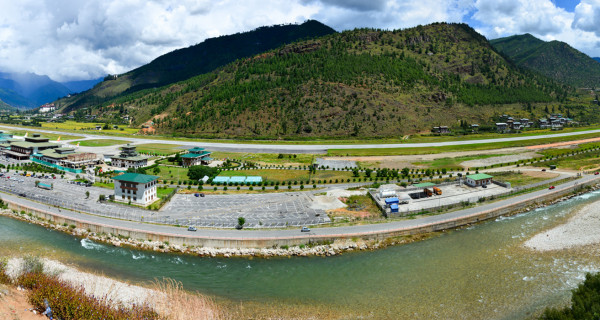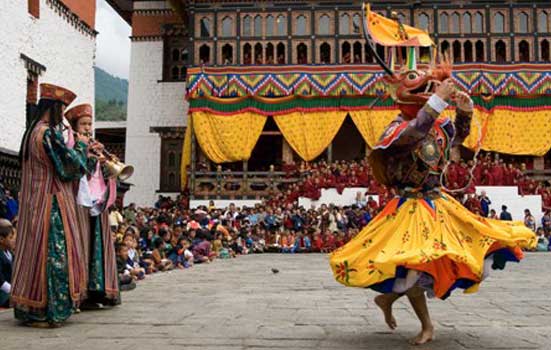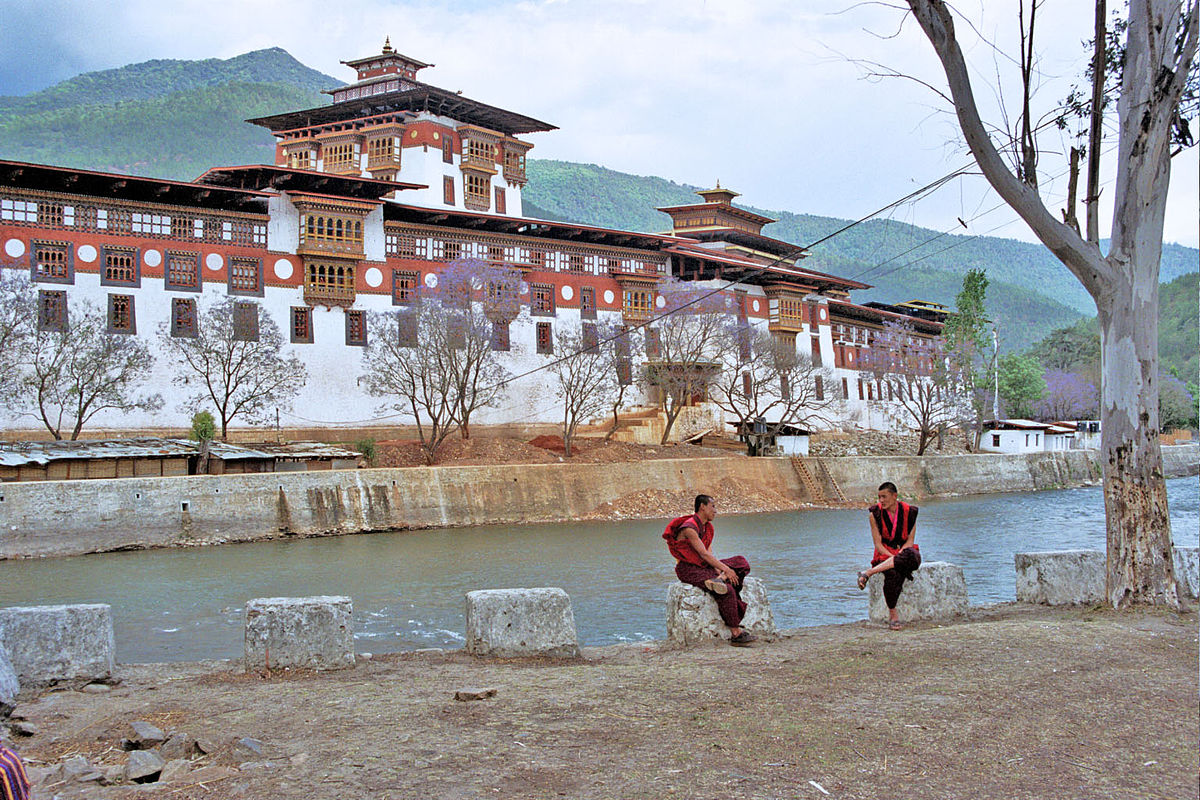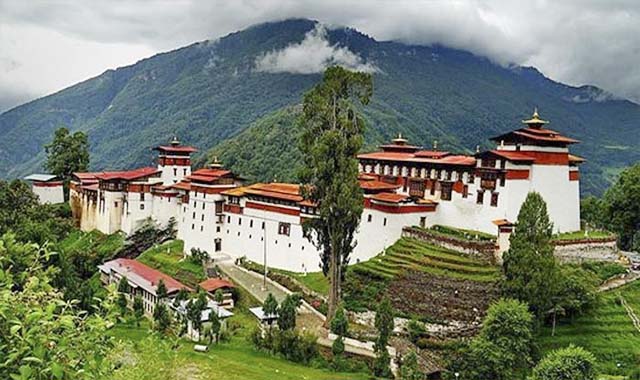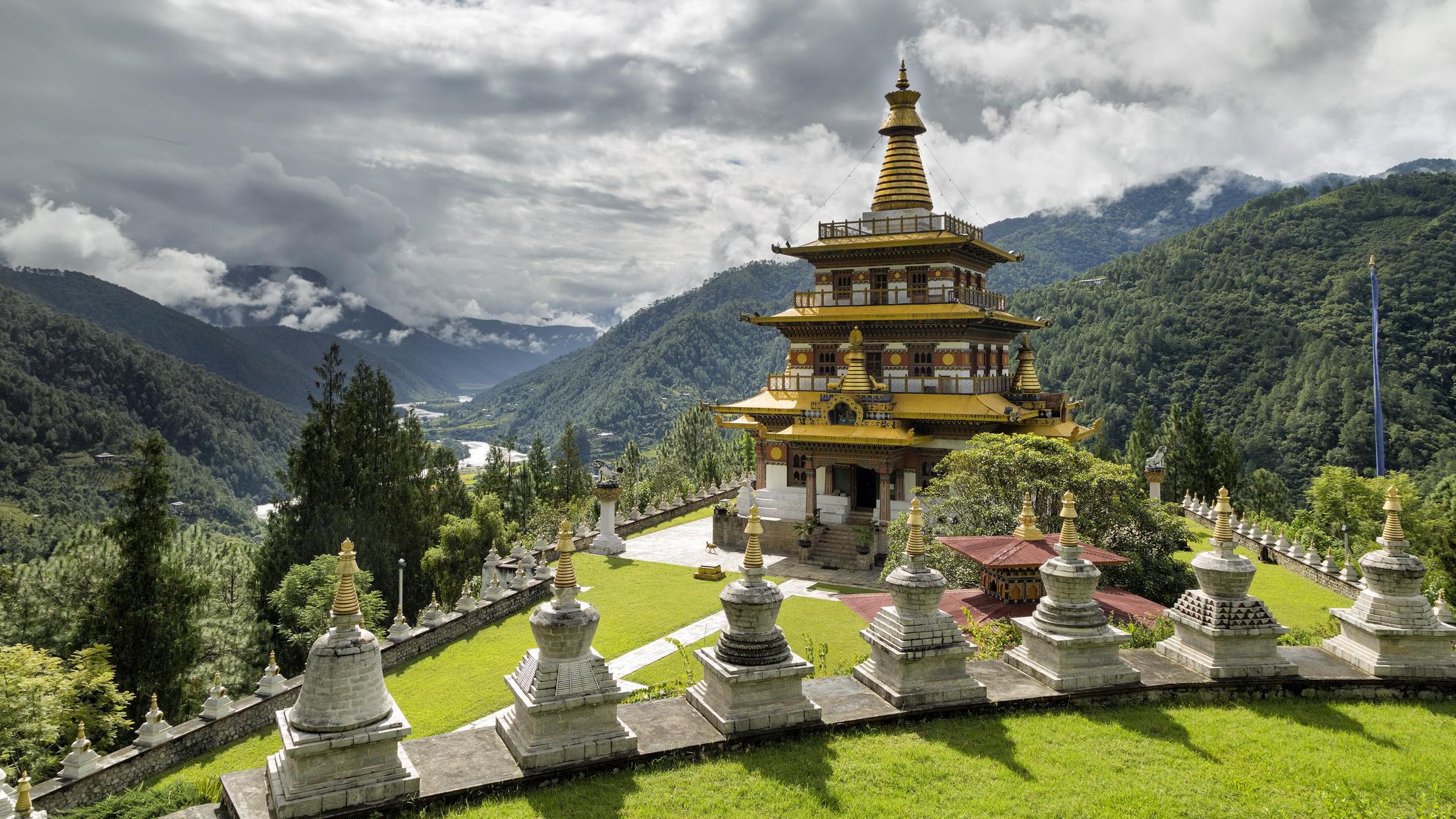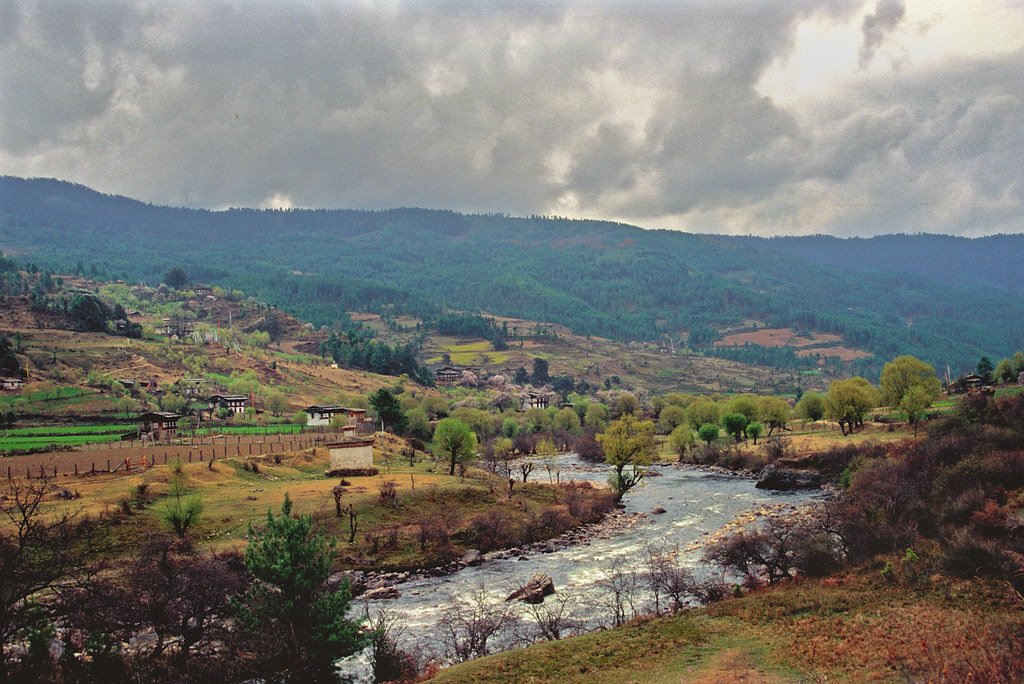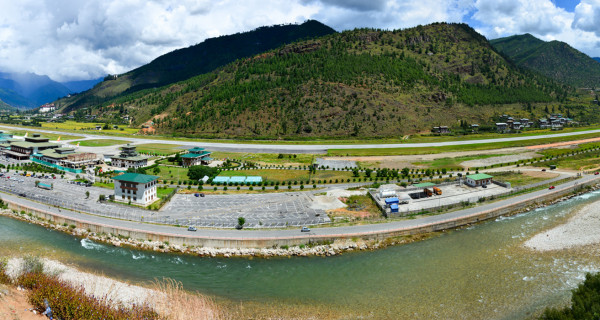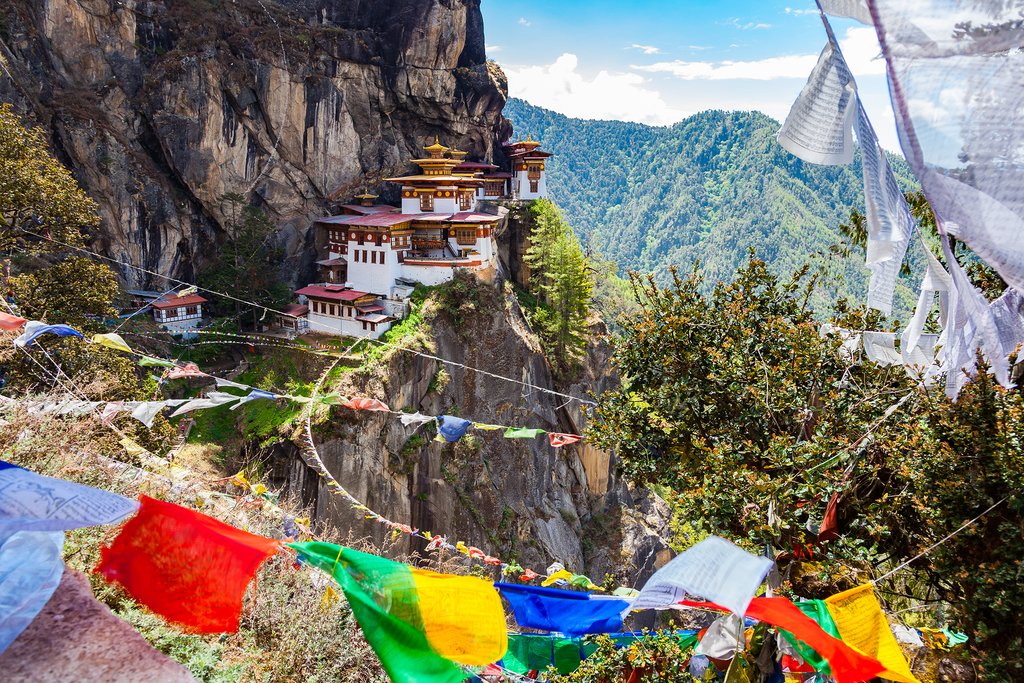Exclusive Bhutan Round Trip
Route : Paro Thimphu Punakha Trongsa Wangduephodrang Bumthang Paro
10 Days 9 nights
Overview
Exclusive Bhutan Round Trip
Paro/ Thimpu/ Punakha/ Trongsa/ Bumthang/Wangduephodrang/ Paro
Location Map
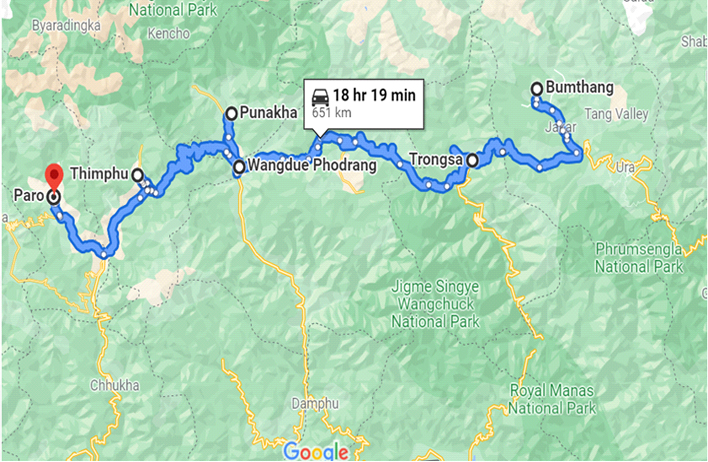
Itinerary
-
1Day 1 : ARRIVE PARO BY FLIGHT PARO/THIMPHU BY SURFACE
In clear weather, Druk Air’s flight to Bhutan provides a wonderful view of Himalayan scenery. Whether flying along the Himalayan range from Kathmandu or over the foothills from Kolkatta, it is a fascinating journey, culminating in an exciting descent past forested hills into the kingdom. On arrival at Paro airport, you will be met by our representative. On completion of airport formalities, there will be an interesting drive of about 1.1/2 hours’ duration to Thimphu, the modern capital town of Bhutan. Later visit King's Memorial Chorten continuously circumambulated by people, murmuring mantras and spinning their prayer wheels. Construction of this landmark was the idea of Bhutan’s third king, His Majesty Jigme Dorji Wangchuk (“the father of modern Bhutan”) who has wished to erect monument to world peace and prosperity. Completed in 1974 after his untimely death, it serves both as a memorial to the Late King and as a monument to peace. Evening visit to Trashichhoedzong, “fortress of the glorious religion”. This is the centre of government and religion, site of monarch’s throne room and seat of Je Khenpo or Chief Abbot. Built in 1641 by the political and religious unifier of Bhutan, Shabdrung Ngawang Namgyal, it was reconstructed in 1960s in traditional Bhutanese manner, without nails or architectural plans. Overnight at the hotel in Thimphu.
-
2Day 2 : THIMPHU
After breakfast, excursion to Tango Goemba. This monastery was founded by Lama Gyalwa Lhanangpa in the 12th century and the present building was built in the 15th century by the ‘Divine Madman’, Lama Drukpa Kunley. In 1616 Shabdrung Ngawang Namgyal visited Tango and meditated in a cave near the monastery. His meditation helped ensure the defeat of an invading Tibetan army. The head Lama, a descendent of Lama Drukpa Kunley presented the goemba to Shabdrung, who carved a sandalwood statue of Chenrezig which he installed in the monastery. The picturesque three-storey tower and several surrounding buildings were built in the 18th century by the eighth Desi, Druk Rabgye and Shabdrung Jigme Chhogyel added the golden roof in the 19th century. Situated north of Thimphu, one way it takes about 30 minutes’ drive and one hour walk through shaded rhododendron forests to reach the monastery. Afternoon visit the National Library, housing an extensive collection of priceless Buddhist manuscripts; the Institute for Zorig Chusum (commonly known as the Painting School) where students undergo a 6-year training course in Bhutan’s 13 traditional arts and crafts. Later visit Textile and Folk Heritage Museum, a fascinating testimony of the Bhutanese material culture and living traditions. Evening visit the government-run Handicrafts Emporium and local crafts shops, to browse through example of Bhutan's fine traditional arts. Here you can buy hand- woven textiles, thangkha paintings, masks, ceramics, slate and wood carvings, jewellery, interesting items made from local materials. Overnight at the hotel in Thimphu.
-
3Day 3 : THIMPHU / PUNAKHA (75 KM, APPROX 3 HRS DRIVE)
After early breakfast, drive up to Dochu-la pass (3,088m/ 10,130 ft) stopping briefly here to take in the view and admire the chorten, mani wall, and prayer flags which decorate the highest point on the road. If skies are clear, the following peaks can be seen from this pass (left to right): Masagang (7,158m), Tsendagang (6,960m), Terigang (7,060m), Jejegangphugang (7,158 m), Kangphugang (7,170 m), Zongphugang (7, 060 m), a Table Mountain that dominates the isolated region of Lunana - finally Gangkar puensum, the highest peak in Bhutan at 7,497m. Later visit to Punakha Dzong, built strategically at the junction of Pho Chhu and Mo Chhu rivers in 1637 by Shabdrung Ngawang Namgyal to serve as the religious and administrative centre of the region, Punakha Dzong has played an important role in Bhutan’s history. Damaged by four catastrophic fires and an earthquake, the Dzong has been fully restored by the present King. Overnight at the hotel in Punakha.
-
4Day 4 : PUNAKHA / TRONGSA (135 KM, APPROX 4 HRS DRIVE)
After breakfast excursion to Chimi Lhakhang, situated on a hillock in the centre of the valley, is dedicated to Lama Drukpa Kuenley, who in the late 15th century used humour, songs and outrageous behaviour to dramatise his teachings and due to this also known as ‘Divine Madman’. This temple is also known as the temple of fertility. It is widely believed that couples who do not have children and wanting one, if they pray at this temple, they are usually blessed with a child very soon. It is about 30- minute walk across field from the road to the temple. The trail leads across rice fields to the tiny settlement of Pana, meaning ‘field’. It then follows a tiny stream downhill to Yoaka and across more fields before making a short climb to Chimi Lhakhang. Then continue on to Trongsa across Pele-la pass (3,300m/10,830 ft), the traditional boundary between east and west. The pass is marked by a large white chorten prayer flags. There is an abrupt change in vegetation at this point, with mountain forest replaced by high altitude dwarf bamboo. Stop en route at Chendbji Chorten, patterned on Kathmandu’s Swayambunath Stupa, with eyes panted at four cardinal points. It was built in the 18 th century by Lama Shida from Tibet, to cover the remains of an evil spirit that was subdued at this spot. Afternoon visit Trongsa Dzong. Like almost all towns in the Kingdom, this Dzong architecture dominates the entire Trongsa horizon dwarfing the surrounding buildings. Built in 1648, it was the seat of power over central and eastern Bhutan. Both the first and second King ruled the country from this ancient seat. Protected from invaders by an impenetrable valley, Trongsa Dzong is an impregnable fortress. The Dzong itself is a labyrinth of temples, corridors and offices holding court over the local community. Overnight at the hotel in Trongsa.
-
5Day 5 : TRONGSA / BUMTHANG (68 KM, APPROX 3 HRS DRIVE)
After breakfast visit Ta Dzong, a cylindrical stone structure rising five storeys, was built in 1652 by Chogyal Minjur Tempa, a task entrusted to him by Zhabdrung Ngawang Namgyal. After more than 350 years, it has been resurrected into a classy museum, that represents a tasteful blend of tradition and modernity. There are 224 items on display including a sacred image of Sung Joenma Dorji Chang (self-spoken Vajradharna), a bronze statue of Pema Lingpa, made by himself, and a number of centuries-old treasures like dance and ritual costumes and objects, ancient prayer books, paintings and scrolls, and textiles. Then drive to Bumthang, 68 km from Trongsa, a journey of about 3 hours, over the Yutong-la pass (3,400m/ 11,155 ft). The road winds steeply up to the pass, 28 km from Trongsa, then runs down through coniferous forest into a wide, open cultivated valley known as the Chumey valley. Afternoon visit Jambay Lhakhang. This monastery was built in the 7th century by Tibetan King, Songtsen Gampo. It is one of the 108 monasteries built by him to subdue evil spirits in the Himalayan region. Its present architectural appearance dates from the early 20th century. Then visit Kurje Lhakhang. Situated before Jambey Lhakhang, Kurje Lhakhang consists of three temples. The one on the right was built in 1652 on the rack face where Guru meditated in the 8th century. Second temple is built on the site of a cave containing a rock with the imprint of Guru’s body and is therefore considered the most holy. The third temple was built in 1990s by Ashi Kesang, the Queen Mother. These three temples are surrounded by a 108 chorten wall. Overnight at the hotel in Bumthang.
-
6Day 6 : BUMTHANG
After breakfast excursion to Tang valley. Terton (treasure discoverer) Pema Lingpa, the famous saint, was born in the Tang valley of Bumthang. The people of this valley raise sheep and at higher elevation, yaks as the soil in this region is not so rich for agricultural activities. From Bumthang central, it is a short drive past the Dechenpelrithang sheep farm to an unpaved road that leads to the north. Just under a kilometer ahead, there is a rough track on the left and another kilometer ahead, there is junction where vehicle can be parked. From parking, it is a short walk down to the river. The path is lined with prayer flags and ends up above a gorge where the river forms a pool before it rushes on. Images of Pema Lingpa and his two sons are carved on a rock here. Afternoon visit Jakar Dzong. Founded by great grand-father of the first Shabdrung, the Dzong was initially built as a monastery in 1549. It was upgraded after the Shabdrung had firmly established his power in 1646. The Dzong is now used as administrative centre for Bumthang valley, and houses the regional monk body. Later visit Tamshing Lhakhang. Located across the river from Kurje Lhakhang, this temple was founded in 1501 by Terton Pema Lingpa, the re-incarnation of Guru Padsambhava. The monastery has very ancient religious paintings like 1,000 Buddhas and 21 Taras (female form of Bodhisattva). The temple was restored at the end of the 19th century. Overnight at the hotel in Bumthang.
-
7Day 7 : BUMTHANG/WANGDUEPHODRANG (220 KM, APPROX 7 HRS DRIVE)
After breakfast, drive to Gangtey. The valley of Gangtey is one of the most beautiful spots in Bhutan. The surprise of finding such a wide, flat valley without any trees after the hard climb through dense forests is augmented by an impression of vast space, and extremely rare experience in Bhutan where most of the valleys are tightly enclosed. A few kilometres beyond the Gangtey Monastery, on the valley floor lies the village of Phobjikha. This place is the winter home of black necked cranes that migrate from the arid plains in the north to pass winter in milder and lower climate. Phobjikha, at an altitude of 2900 m, falls under the district of Wangdue Phodrang and lies on the periphery of the Black Mountain National Park. Visit Gangtey monastery and beautiful Phobjikha valley. After lunch, drive to Wangdue Phodrang. En route visit Wangdue Phodrang Dzong. Sitting on top of the hill at the confluence of Punakha Chhu and Tang Chhu rivers, Wangdue Phodrang Dzong is town’s most visible features. Overnight at the hotel in Wangdue Phodrang.
-
8Day 8 : WANGDUEPHODRANG / PARO (125 KM, APPROX 4 HRS DRIVE)
After breakfast drive to Paro en route visit Simtokha Dzong. This dzong, built in 1627 by Shabdrung Ngawang Namgyal, stands on a low ridge 8 km down the valley from Thimphu. The Institute for Language and Cultural Studies is located here. The most noteworthy artistic feature of this dzong is the series of over 300 finely worked slate carvings behind the prayer wheels in the courtyard. Afternoon visit Ta Dzong, originally built as Watchtower, which now houses National Museum. The extensive collection includes antique thangkha paintings, textiles, weapons & armour, household objects and a rich assortment of natural and historic artifacts. Then walk down the trail to visit Rinpung Dzong, meaning (“fortress of the heap of jewels”), which has a long and fascinating history. Along the wooden galleries lining the inner courtyard are fine wall paintings illustrating Buddhist lore such as four friends, the old man of long life, the wheel of life, scenes from the life of Milarepa, Mount. Sumeru and other cosmic Mandala. Overnight at the hotel in Paro.
-
9Day 9 : PARO
After breakfast excursion to Taktsang Monastery (approx 5 hrs walk). It is one of the most famous of Bhutan’s monasteries, perched on the side of a cliff 900m above the Paro valley floor. It is said that Guru Rinpoche arrived here on the back of a tigress and meditated at this monastery and hence it is called ‘Tiger’s Nest’. This site has been recognized as a most sacred place and visited by Shabdrung Ngawang Namgyal in 1646 and now visited by all Bhutanese at least once in their lifetime. On 19 April, 1998, a fire severely damaged the main structure of building but now this Bhutanese jewel has been restored to its original splendour. Later drive to Drukgyel Dzong, a ruined fortress where Bhutanese warriors fought Tibetan invaders centuries ago. The snowy dome of sacred Chomolhari, "mountain of goddess'' can be seen in all her glory from the approach road to the Dzong. Along the way, visit the 7th century Kyichu Lhakhang, one of the 108 temples built in the Himalayas by Tibetan King, Songtsen Gampo. The building of this temple marks the introduction of Buddhism in Bhutan. Overnight at the hotel in Paro.
-
10Day 10 : LEAVE PARO BY FLIGHT
LEAVE PARO BY FLIGHT
